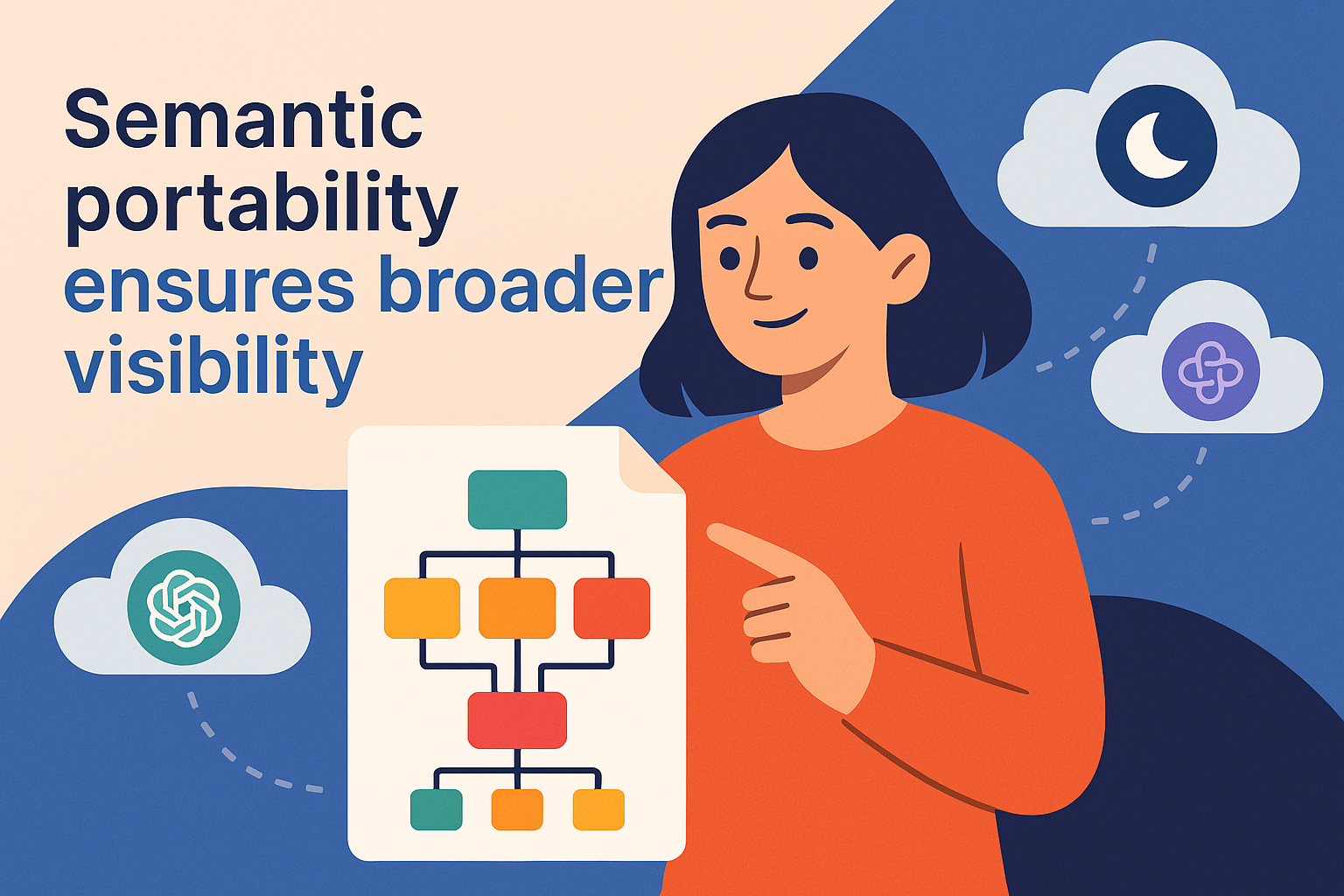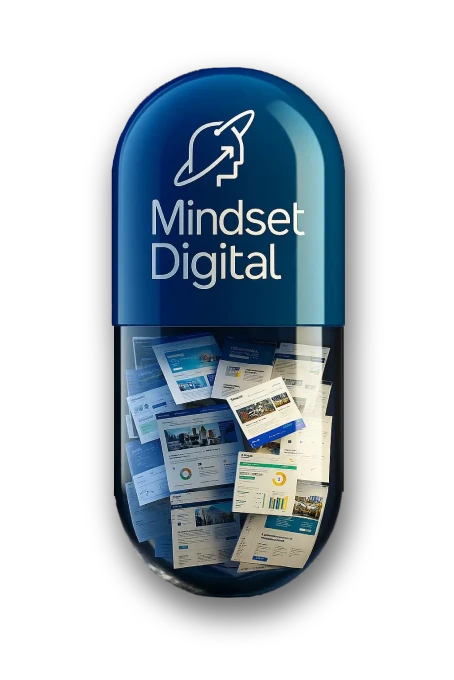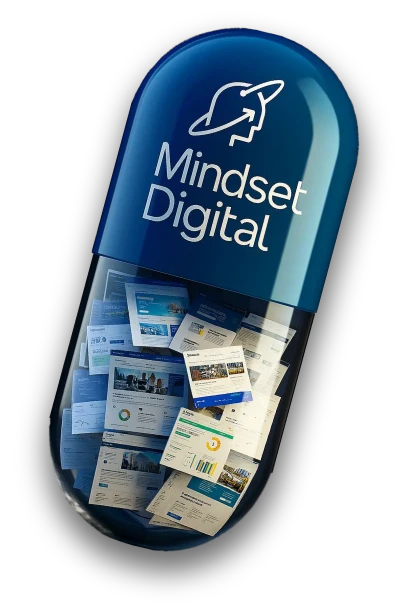Introduction: many models, one semantic logic
Each generative model —ChatGPT, Claude, Gemini, Mistral and others— rebuilds answers using its own techniques: different attention mechanisms, different context windows, variations in how they form logical chains. But there is a shared denominator across all of them: models rely on embeddings, semantic indexes, and conceptual clustering.
This means that although the surface of the text may vary from model to model, the way they interpret and organize meaning is surprisingly similar. That’s why content that performs well in one architecture usually performs well in all the others… if it is designed to be semantically portable.
What “semantic portability” means for LLMs
Semantic portability is the ability of a piece of content to be understood and represented consistently across different vector spaces. It doesn’t depend on tone or style; it depends on conceptual structure.
In practice, portable content:
- produces dense embeddings,
- contains explicit conceptual relationships,
- can be indexed across architectures,
- minimizes semantic noise,
- and avoids internal contradictions.
Portability is not aesthetics. It is mathematics.
Despite their differences, all major models share the same semantic building blocks:
- Embeddings: vector representations of meaning.
- Semantic indexes: internal structures used to organize information.
- Distributed patterns: attention relationships between tokens and concepts.
- Conceptual clustering: grouping of related ideas in vector space.
If your content fits these systems well, it fits any model.
The revelation: optimizing for one model is not enough
It is not enough to perform well in ChatGPT. Nor to adjust your content for Perplexity or Gemini. The future is not one dominant model, but an ecosystem of generative engines.
If your content is understood in any vector space, your visibility multiplies across all of them.
This is why certain formats work especially well:
- clear definitions,
- explicit conceptual relationships,
- structured taxonomies,
- examples that reinforce patterns.
How to design content that is portable across architectures
1. Write definitions that vectorize cleanly
A strong definition:
- is precise,
- avoids noise,
- connects the concept to a larger framework,
- helps the model “place” it in its semantic map.
Clear definitions are the most direct path to portability.
2. Make conceptual relationships explicit
Models require bridges between ideas. If they don’t find them, they reconstruct them —and they may reconstruct them incorrectly.
Useful phrasing includes:
- “This concept derives from…”
- “X is the natural consequence of Y…”
- “A relates to B because…”
These connections strengthen the embedding structure.
3. Build clear and complete taxonomies
LLMs understand hierarchical structures extremely well: categories → subcategories → elements.
A solid taxonomy organizes your domain into a stable knowledge system.
4. Use concrete but conceptually aligned examples
An example should not drift from the conceptual framework —it should replicate it at a smaller scale. This reinforces fractality and semantic density.
5. Minimize noise and maximize semantic density
Portability depends more on compressibility than on volume. Less text, well structured, is more portable than long, diffuse paragraphs.
6. Preserve epistemic coherence
Internal contradictions, exaggerated claims, or shifts in conceptual framing break portability. Models distrust domains that don’t “sound like the same mind” across articles.
Why portable content generates more generative visibility

Portable content:
- enters the model’s internal memory more effectively,
- produces more coherent embeddings,
- is used in more responses,
- and appears across very different generative engines.
In a fragmented AI landscape, semantic portability is the foundation of cross-model authority.
Connection with the rest of the series
This principle emerges naturally from earlier chapters:
- models don’t read pages (#1),
- the best content is the most vectorizable (#2),
- authority is a topology, not a ranking (#3),
- citations are a byproduct (#4),
- epistemic fragility is penalized (#5),
- fractal structures aid absorption (#6),
- visibility happens in the model’s memory (#7),
- over-optimization breaks naturalness (#8).
Portability is the natural consequence of all these principles combined.
Application in advanced content strategies
In projects where SEO, AI and automation converge, portable content allows you to:
- influence multiple architectures,
- increase citation likelihood,
- expand reach across generative engines,
- and consolidate conceptual authority across the entire ecosystem.
This chapter introduces the last conceptual pillar before the final closing article: how models reward systemic coherence over isolated content.
Conclusion: write for the vector space, not for the model
Each model has its style, but they all share the same semantic fundamentals. Optimizing for that shared semantic layer is the most robust strategy for long-term visibility.
Portable content is content that fits into any architecture and remains stable across all vector spaces. That is the new standard for building authority in the era of LLMs.


